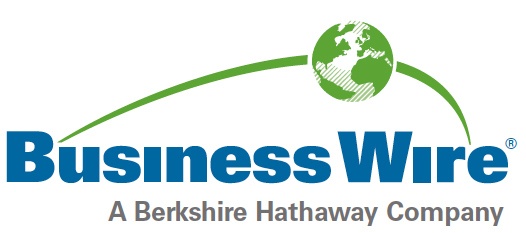Pensions & Investments: Sponsors Mull New Methods to Fight Inflation
NEPC’s Bill Ryan was quoted in a recent Pensions & Investments article to discuss what he believes should be the primary defense against unexpected inflation for retirees. View the article on Pensions & Investments’ site here.
Defined contribution plan sponsors have shied away from putting inflation-sensitive investments in their plan menus, but with inflation still high, some are starting to re-evaluate their thinking.
. . .
“The participants who probably would benefit the most are those over 60 in retirement who are taking withdrawals from their account and they’re trying to maintain their spending on gas and bread,” said Bill Ryan, a partner and head of defined contribution solutions at NEPC LLC in Chicago.
Retirees will need a “higher weight to inflation-sensitive assets because they’re trying to hedge against the unexpected change that would compromise their spending ability,” Mr. Ryan said.
Even then, though, Mr. Ryan and other consultants would be wary of adding new investments, preferring instead to allow target-date funds to do the heavy lifting in fighting inflation risk.
“I do think the primary defense against unexpected inflation or even unexpected equity rallies or shocks is through a target-date fund or some diversified portfolio because they help each of the asset classes play a certain role that counterbalance each other,” Mr. Ryan said.
Click here to continue reading the full Pensions & Investments article.
Pensions & Investments: SECURE 2.0 Fails to Provide All of the Help Sought by 403(b) Plans
NEPC’s Bill Ryan was quoted in a recent Pensions & Investments article expressing his disappointment that CITs failed to cross the finish line for 403(b) plans. View the article on Pensions & Investments’ site here.
The retirement industry’s effort to have 403(b) plans offer collective investment trusts looks like the political version of the famous Peanuts cartoon featuring Lucy, Charlie Brown and a football.
Lucy holds the football. Charlie Brown tries to kick it. She pulls the ball away at the last minute.
After several years of lobbying Congress, retirement industry trade groups thought they had a breakthrough with the retirement security package SECURE 2.0, which, among other things, made enhancements in the use of auto enrollment, annuitization and linking corporate retirement plan matches to student loan payments.
. . .
“SECURE 2.0 was allegedly a slam dunk,” said William Ryan, the Chicago-based partner and head of defined contribution plan solutions at NEPC LLC, expressing disappointment that CITs failed to cross the finish line for 403(b) plans and wondering when Congress might try again.
“It took four years to go from SECURE 1.0 to SECURE 2.0,” said Mr. Ryan, noting that those laws were achieved through bipartisan support. With divided government, “it could be a decade” before the law is changed, he said.
Click here to continue reading the full Pensions & Investments article.
Pensions & Investments: Opportunities Still Exist for CIT-Like Group Trusts in 403(b) Plans
NEPC’s Bill Ryan was quoted in a recent Pensions & Investments article to discuss 403(b) plan investment options after Congress’ failure to let executives offer collective investment trusts. View the article on Pensions & Investments’ site here.
Thwarted by Congress’ failure to let them offer collective investment trusts, executives of some 403(b) plans could offer a CIT-like investment thanks to laws and regulations already on the books.
However, and it’s a big however, the process for offering this type of pooled investment vehicle — a group trust — by investment managers can be challenging for 403(b) plans because it requires cooperation from record keepers, custodians and trust companies as well as convincing investment committees and educating participants.
To qualify, sponsors that invest in group-trust investment managers must beware of guidelines contained in several no-action letters from the Securities and Exchange Commission to avoid running afoul of prohibitions in securities laws that Congress didn’t address in the SECURE 2.0 retirement package.
. . .
“There is a pathway,” said William Ryan, the Chicago-based partner and head of defined contribution plan solutions at NEPC LLC. “If you have more than $2 billion in assets, I would kick the tires on this.”
Mr. Ryan said perhaps 1% to 2% of all 403(b) plans might be able or are interested to pursue creating a white label separate account containing pooled investments that aren’t available to others outside of a specific sponsor and aren’t considered investments requiring SEC registration.
Click here to continue reading the full Pensions & Investments article.
FIN News: Inflation, Interest Rates Present Biggest Risks To Markets: NEPC Study
NEPC’s Brad Smith was quoted in a recent FIN News article to discuss concerns of plan sponsors found through our 2022 DB Flash Poll. View the article on FIN News’ site here.
Corporate and healthcare pension plan sponsors agree that combating inflation and rising interest rates are among the biggest risks to markets over the next year, according to NEPC’s latest survey.
The investment consultant’s 2022 DB Trends Flash Poll reveals the biggest risks to markets over the next 12 months in addition to how plan sponsors are assessing their glidepaths and managing allocations against the backdrop of this year’s heightened market volatility.
. . .
“It’s been nearly a decade since plan sponsors have had to keep factors like rapid inflation and rising rates in mind when rebalancing or determining their asset allocation strategies,” said NEPC Corporate Defined Benefit and Defined Contribution consultant Bradley Smith, in a statement.
. . .
“With rising concerns about how corporate profits will likely impact the market in the year ahead, our priority right now is helping ensure that our pension and defined contribution clients are well equipped to mitigate risk and have a clear plan of action in 2023 and beyond,” Smith continued.
ASPPA: Reticence and Risks Rife?
NEPC’s 2022 DB Flash Poll findings were featured in a recent article from the American Society of Pension Professionals & Actuaries (ASPPA) to discuss risks plan sponsors perceive and anticipate. View the article on ASPPA’s site here.
These are bracing times for retirement savers, and two recent reports offer a window into tensions savers feel and risks plan sponsors perceive and anticipate.
Economic uncertainty can breed slower progress in saving for retirement or even regression, LIMRA suggests. Even before the current economic conditions, they say, nearly 40% of those nearing retirement were very concerned that they would outlive their retirement savings.
. . .
“The investment consulting firm NEPC buttresses the current apprehension. In a November 2022 poll of corporations and non-profits, they report that the ability of the Federal Reserve to manage inflation was the top choice of what the biggest risks are to the markets in the next 12 months. Rising interest rates came in second.
Further, NEPC says that none of the respondents that had frozen their defined benefit plan said that they were going to unfreeze it or that they had even thought about doing so.”
Pensions & Investments: Plan Sponsors See Inflation, Lower Profit Margins as Biggest Risks to Stock Market
NEPC’s Brad Smith was quoted in a recent Pensions & Investments article to discuss concerns of plan sponsors found through our 2022 DB Flash Poll. View the article on Pensions & Investments’ site here.
A survey by NEPC asking 44 corporate and health-care pension funds what they thought were the top three risks to the stock market over the next 12 months said that 93% chose the Federal Reserve’s ability to fight inflation as one of the risks, 79% picked rising interest rates and 57% chose declining corporate profit margins.
. . .
“We believe the first three responses are connected as plan sponsors remain concerned about the overall health of the economy,” said Brad Smith, partner and member of NEPC’s corporate defined benefit team. “We believe many respondents are concerned that the Fed may overtighten, sending the economy into a hard recession.”
Mr. Smith said that falling profit margins would add additional downward pressure on equity valuations and would likely lead to additional pressure on stock prices.
“Therefore, it is not surprising that plan sponsors identified profit margins, the Fed and higher rates as the biggest concerns,” he said.
Click here to continue reading the full Pensions & Investments article.
Forbes: ESG Investing: A Blue Ocean for Corporate Employer-Sponsored Retirement Plans
Read more







